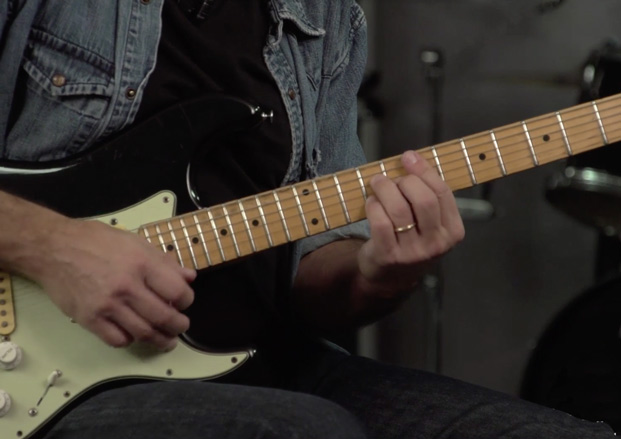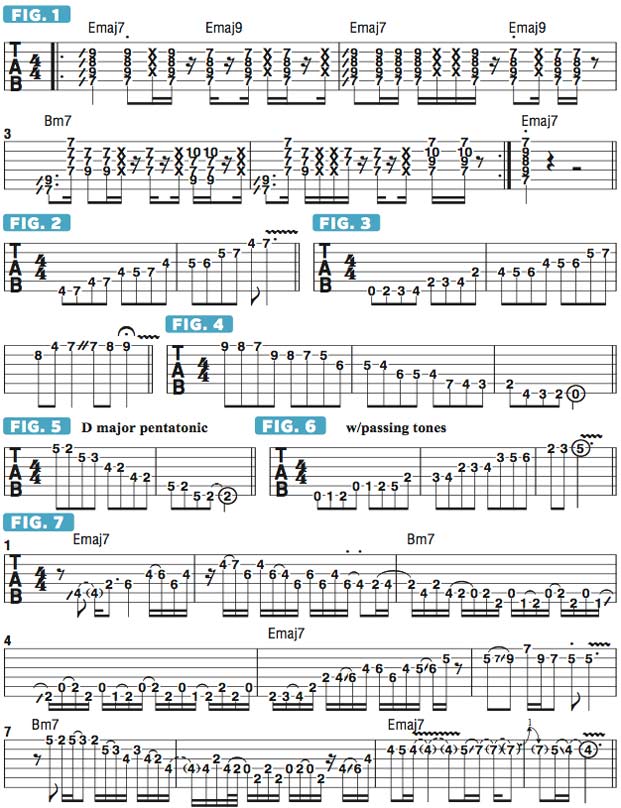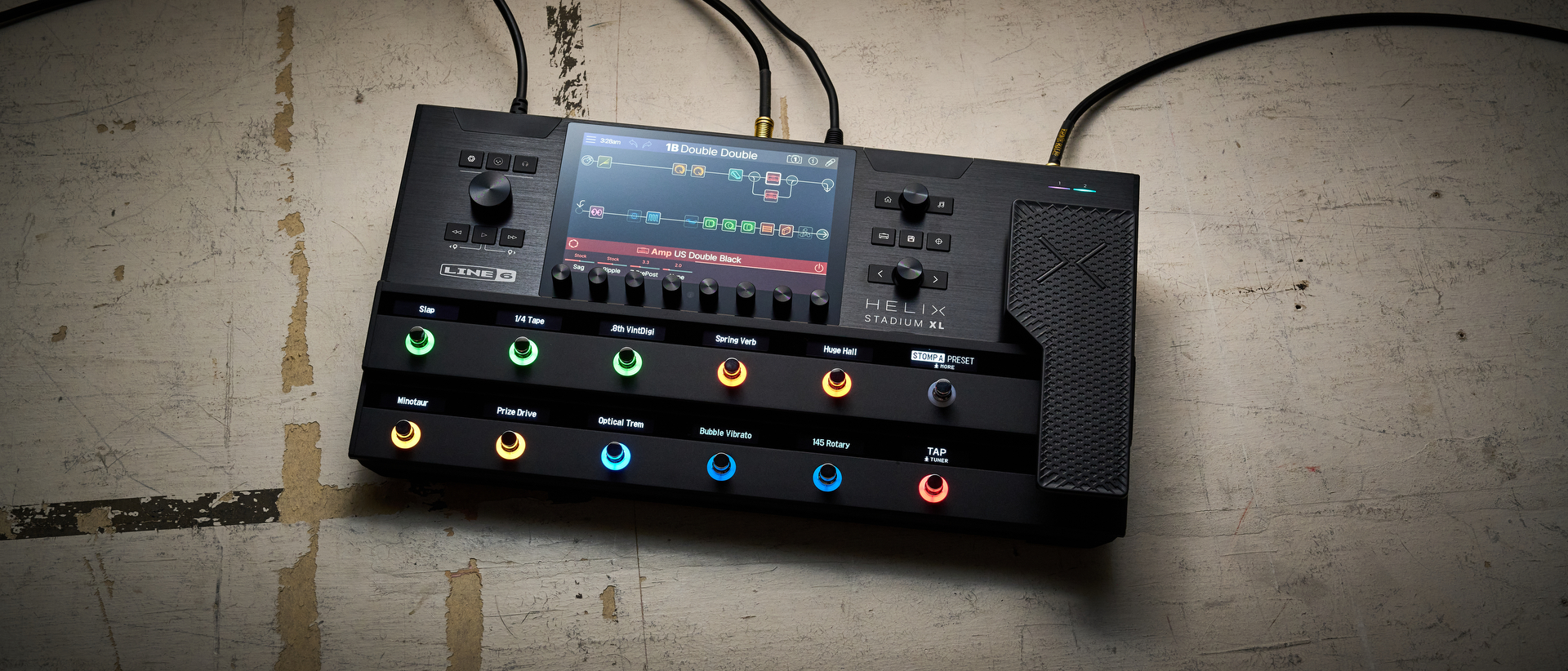Infusing Major Pentatonic Patterns with Chromatic Passing Tones
Learn some cool approaches to improvising over an Emaj7-Bm7 chord progression.

One of the true signature elements of Grateful Dead guitarist Jerry Garcia’s unique style was his frequent incorporation of chromatic passing tones into his solo phrases.
“Eyes of the World,” the 1973 Dead classic that’s based on a groove inspired by Marvin Gaye’s “What’s Going On,” supplied the perfect backdrop for Garcia to weave beautifully melodic and rhythmically complex chromatic-infused improvisations over.
In the last two columns, we explored E major pentatonic scale positions all over the fretboard for soloing over the song’s one-chord Emaj7 intro vamp. This month, I’d like to show you some cool approaches to improvising on the chord progression heard during the song’s first solo section, Emaj7-Bm7.
FIGURE 1 illustrates the chord progression that I will be soloing over, built from two bars of Emaj7/Emaj9 and two bars of Bm7, played as a repeating four-bar pattern. Across the first two bars, I switch from Emaj7 to Emaj9 on the upbeat of beat three. When playing the Bm7, I add the pinkie on the high A note, on the B string’s 10th fret, on beat four of both bars.
Now let’s look at some scale patterns with chromatic passing tones that we can use as a basis for soloing. FIGURE 2 shows the E major pentatonic scale (E F# G# B C#) played in fourth position. A great way to add chromatic passing tones to this scale is to include the notes G, which is the minor, or “flatted,” third, and C, the minor, or “flatted,” sixth. As shown in FIGURE 3, the resulting series of notes is, in ascending order, E F# G G# B C C#. This is now a seven-note scale, which can be repeated in every octave as one moves up the fretboard. FIGURE 3 shows the scale in an ascending pattern, and FIGURE 4 offers a different way to descend through the same series of notes.
There are a variety of ways to approach soloing over the Bm7 chord, and a great one is to superimpose the D major pentatonic scale (D E F# A B) with the same two passing tones added—the flatted third and flatted sixth. This works because D major is the relative major of B minor, and the notes of D major pentatonic are the same as those that make up B minor pentatonic—B D E F# A. In this way, we can simply move our E major pentatonic ideas and shapes down one whole step, or two frets, when playing over Bm7.
FIGURE 5 illustrates the D major pentatonic scale played in second position, and FIGURE 6 depicts the scale with the flatted third and flatted sixth passing tones (F and Bb) added. FIGURE 7 offers a 10-bar solo over the Emaj7-Bm7 progression, during which I repeatedly switch from E major pentatonic- to D major pentatonic-based lines every two bars, with the emphasis on making the most of the chromatic passing tones over each chord.
All the latest guitar news, interviews, lessons, reviews, deals and more, direct to your inbox!

Guitar World Associate Editor Andy Aledort is recognized worldwide for his vast contributions to guitar instruction, via his many best-selling instructional DVDs, transcription books and online lessons. Andy is a regular contributor to Guitar World and Truefire, and has toured with Dickey Betts of the Allman Brothers, as well as participating in several Jimi Hendrix Tribute Tours.

